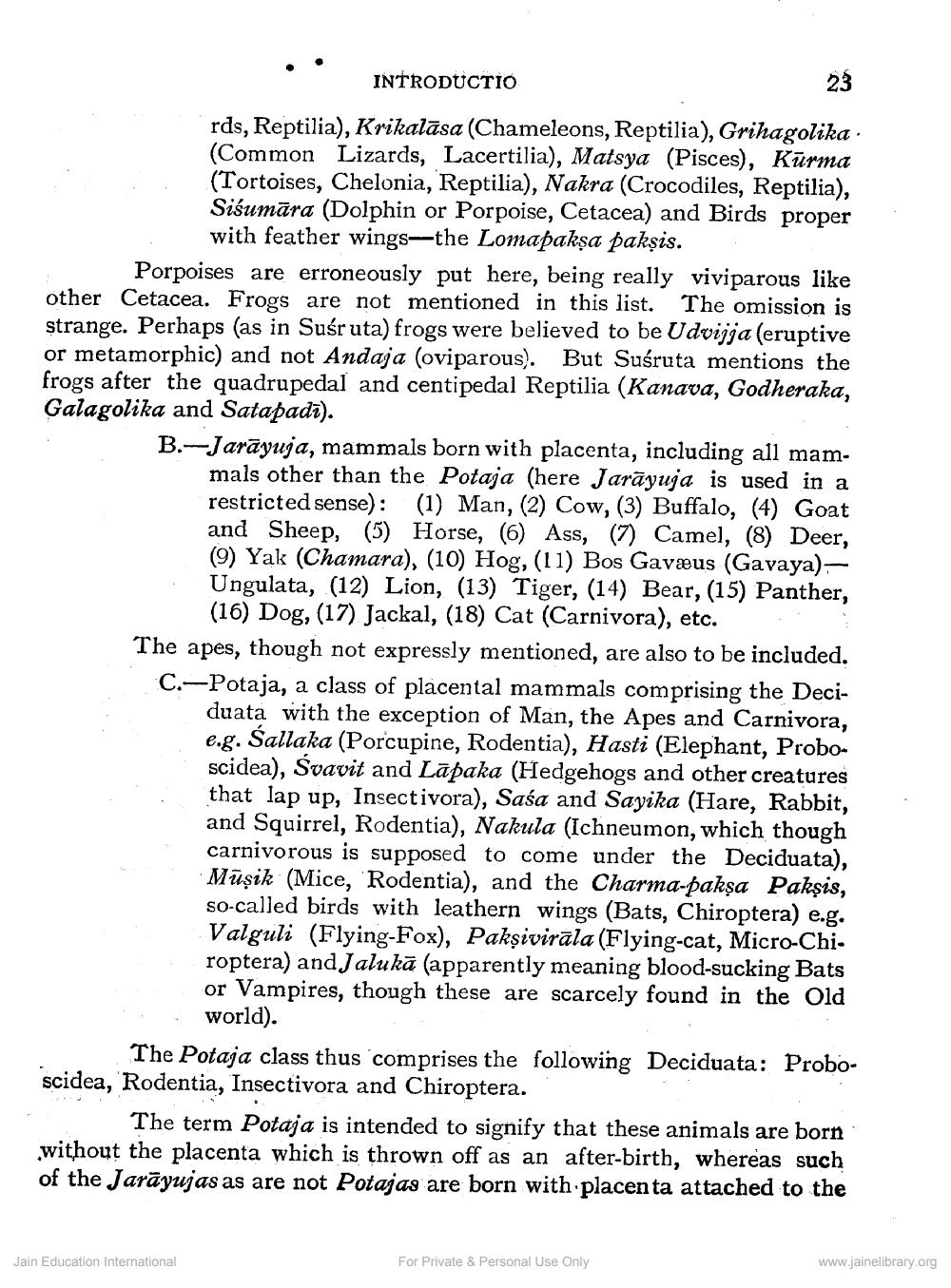________________
INTRODUCTIO
rds, Reptilia), Krikalāsa (Chameleons, Reptilia), Grihagolika (Common Lizards, Lacertilia), Matsya (Pisces), Kūrma (Tortoises, Chelonia, Reptilia), Nakra (Crocodiles, Reptilia), Siśumāra (Dolphin or Porpoise, Cetacea) and Birds proper
with feather wings--the Lomapakşa pakşis. Porpoises are erroneously put here, being really viviparous like other Cetacea. Frogs are not mentioned in this list. The omission is strange. Perhaps (as in Suśruta) frogs were believed to be Udvijja (eruptive or metamorphic) and not Andaja (oviparous). But Susruta mentions the frogs after the quadrupedal and centipedal Reptilia (Kanava, Godheraka, Galagolika and Satapadī).
B.-Jarāyuja, mammals born with placenta, including all mam
mals other than the Potaja (here Jarāyuja is used in a restricted sense): (1) Man, (2) Cow, (3) Buffalo, (4) Goat and Sheep, (5) Horse, (6) Ass, (7) Camel, (8) Deer, (9) Yak (Chamara), (10) Hog, (11) Bos Gavæus (Gavaya) - Ungulata, (12) Lion, (13) Tiger, (14) Bear, (15) Panther,
(16) Dog, (17) Jackal, (18) Cat (Carnivora), etc. The apes, though not expressly mentioned, are also to be included. C.-Potaja, a class of placental mammals comprising the Deci
duata with the exception of Man, the Apes and Carnivora, e.g. Sallaka (Porcupine, Rodentia), Hasti (Elephant, Proboscidea), Svavit and Lāpaka (Hedgehogs and other creatures that lap up, Insectivora), Saśa and Sayika (Hare, Rabbit, and Squirrel, Rodentia), Nakula (Ichneumon, which though carnivorous is supposed to come under the Deciduata), Mūșik (Mice, Rodentia), and the Charma-paksa Paksis, so-called birds with leathern wings (Bats, Chiroptera) e.g. Valguli (Flying-Fox), Pakşivirāla (Flying-cat, Micro-Chi. roptera) and Jalukā (apparently meaning blood-sucking Bats or Vampires, though these are scarcely found in the Old
world).
The Potaja class thus comprises the following Deciduata: Probo. scidea, Rodentia, Insectivora and Chiroptera.
The term Potaja is intended to signify that these animals are born without the placenta which is thrown off as an after-birth, whereas such of the Jarāyujas as are not Potajas are born with placenta attached to the
Jain Education International
www.jainelibrary.org
For Private & Personal Use Only




